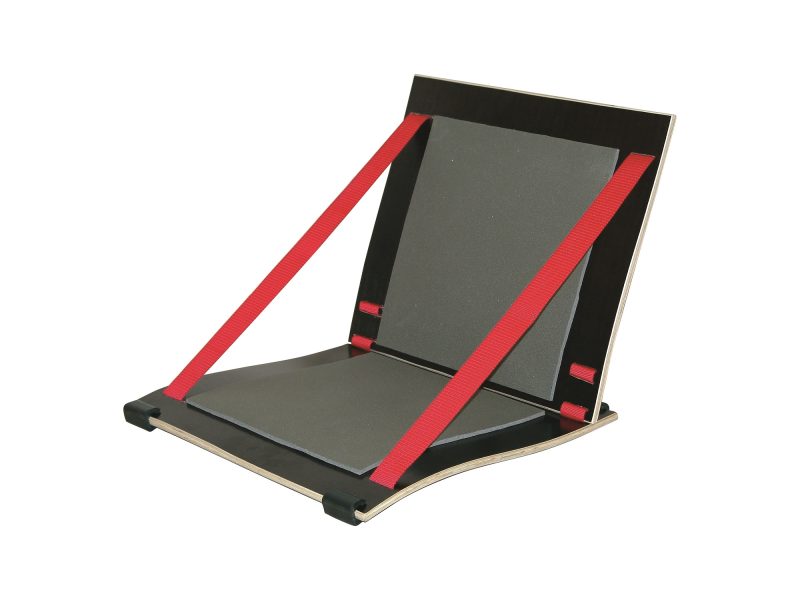Flap chair
The idea for Flap chair came from the need to sit outdoors on uneven and sloping surfaces. It would serve as a seating area for a May Day lunch on the cold cliffs of Kaivopuisto, at a Pori Jazz Festival, on wet grass or hot sand.

The Flap chair sits at ground level, where sitting and getting up requires a little effort. By pushing yourself backwards with your feet, you can find the right angle of inclination and swinging feels comfortable. The Flap chair can be stored underneath against a wall or placed on a specially designed stand. You can carry it like a backpack or a briefcase. It can also be easily transported on a bicycle rack, in boat or in car.
The Flap chair consists of four parts: a seat and backrest of the same shape and two straps connecting them. The seat and backrest are made of weather-resistant plywood using the same mould. The straps are made from a safety belt, which is slid into place and friction binds it to the chair frame. The simple design of the Flap chair makes it easy to replace any part with a new one. The sitting position can be easily adjusted by tightening or loosening the belts.
Flap was first exhibited at the Points Group of interior designers at the Zaza furniture store in June 2005. Its image appeared in architecture news, Ornamo’s newsletter and in the “Design Year 2005n” publication, which was distributed to homes in Helsinki.
I assumed that the small number of parts and the CNC milling would keep the price of the chair reasonable. I presented Flap to Ikea’s representative in Finland, who was so enthusiastic that he immediately sent the picture to a contract manufacturer, asking for a quote to make 15,000 chairs. The retail price of the chair was just under 20 euros, which I think was just right.
Unfortunately, that was the end of the story. Ikea’s head office in Älmhult said they were not interested in the product, adding that they had more than 700 inhouse-designers. My consolation is that Ikea does not pay anyone a royalty and any external designer receives a formal one-off payment for their product.
After a depressing start, I tried contacting Finnish manufacturers. One wanted legs in it, another didn’t think he could sell it and suggested discount stores or petrol stations for marketing. I did some research and it turned out that they usually don’t produce anything but take ready-made products for sale.
In my opinion, Flap met all the requirements for success, but despite my efforts, I could not find a manufacturer who was interested in the chair, so it remained in the prototype stage. The designer should have their own agent to whom she or he could leave the marketing side and concentrate on the product design.